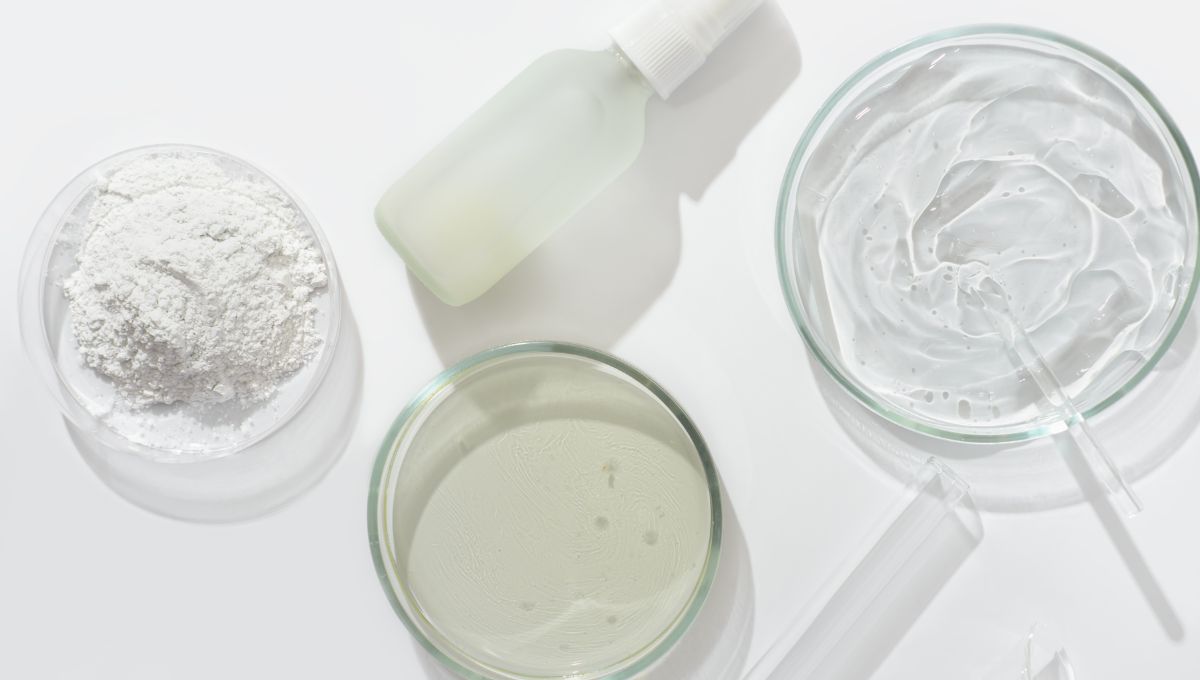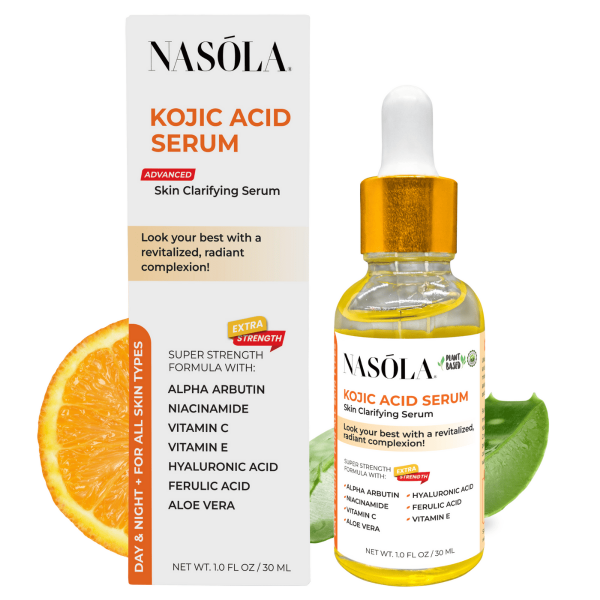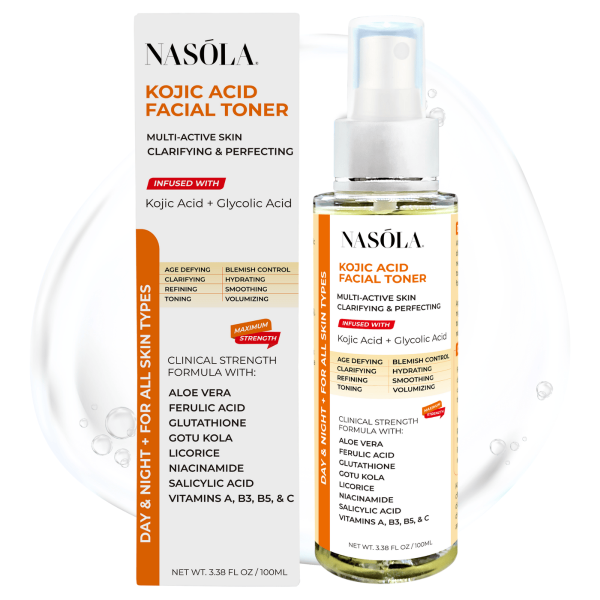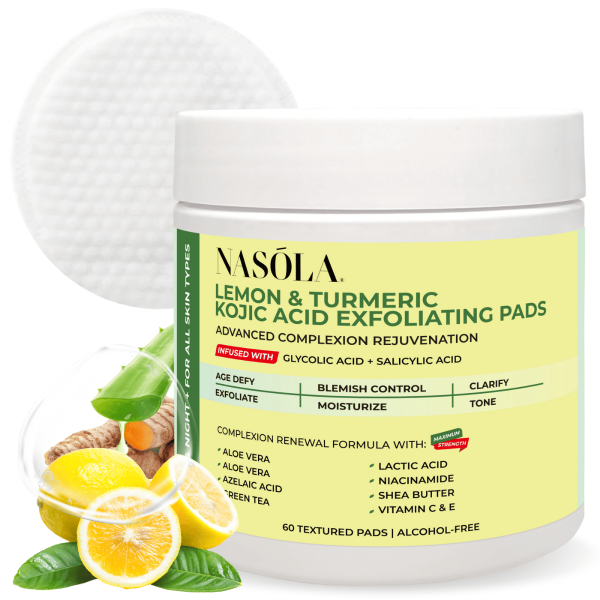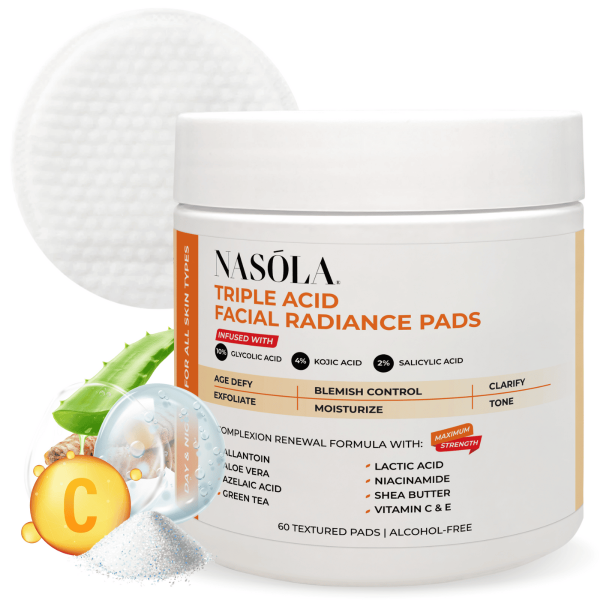Is salicylic acid good for dry skin? If your gut said “probably not,” I get it—after all, it’s hailed as the go-to for oily, acne-prone skin, not parched and flaking complexions.
But what if—just maybe—you’re using it wrong? Or better yet, you haven’t met the version that respects dry skin’s boundaries?
This blog is for the dry-skin warriors out there—those of us walking a tightrope between too little exfoliation and too much irritation.
We’ll dig deep (pun intended) into how salicylic acid behaves on dry skin, when to use it, how to buffer its effects, and the smartest product picks for the job.
From the soothing nourishment of the Nasola Kojic Acid Toner to the exfoliating brilliance of Nasola Triple Acid Facial Radiance Pads, we’ve got experts in hydration and exfoliation ready to make your skin say ahhh.
So let’s break down what’s myth, what’s fact, and what your skin has REALLY been waiting for…
- Is Salicylic Acid Good for Dry Skin? What You Need to Know
- The Role of Kojic Acid in Hydrating and Brightening Dry Skin
- Choosing the Right Form of Salicylic Acid Products for Dry Skin
- Exfoliating Dry Skin with Gentle Acids: Product Picks
- Hydration First: The Importance of Layering Skincare Products
- Ingredient Spotlight: Glycerin
- Conclusion
- Frequently Asked Questions (FAQs)
Is Salicylic Acid Good for Dry Skin? What You Need to Know
It’s a valid question—”is salicylic acid good for dry skin?”—and one that deserves more than just a one-size-fits-all answer.
While salicylic acid is a beta hydroxy acid famous for zapping zits and shrinking pores, it has a bit of a rep for drying things out. And when your skin’s already throwing snowflakes (y’know…flaking?), the risk feels real.
But salicylic acid isn’t inherently harsh—it’s how you introduce it to your routine that determines the relationship.
Let me explain…
What Salicylic Acid Does for Your Skin
Salicylic acid is oil-soluble, meaning it can wiggle its way into pores, dissolving dead skin, gunk, and excess oil. It’s a game-changer for acne—but that same exfoliating power can spell trouble for dry skin without the right backup.
Here’s what it brings to the table:
- Penetrates clogged pores for deep cleansing
- Reduces inflammation and redness
- Promotes smoother texture by sloughing off dead skin cells
- Enhances overall skin clarity and brightness
However… when used too frequently or without moisturizing support, salicylic acid can mess with your moisture barrier, triggering:
- Flaking or peeling
- Tight sensation post-use
- Increase in sensitivity or dry patches
- Disruption of the skin’s natural oils
This doesn’t mean dry skin types should avoid it—it just means you need the right strategy.
Benefits and Risks for Dry Skin Types
For dry skin types, using salicylic acid sparingly and wisely can maintain smoothness without sacrificing hydration. The trick lies in choosing products that pair it with other gentle and moisturizing ingredients.
Here’s what to look for:
- Low concentrations (preferably <2%)
- Formulas including humectants like glycerin or hyaluronic acid
- Supportive ingredients like willow bark extract or niacinamide
- Hydration layering pre-and post-application
One excellent ally? The Nasola Kojic Acid Facial Toner. It’s packed with kojic acid, botanical tonics, and hydrating ingredients that harmonize beautifully with salicylic acid for dry and sensitive skin types. It helps tone and replenish—a combo that lets salicylic acid work without making your skin feel like parchment paper.
The Role of Kojic Acid in Hydrating and Brightening Dry Skin

If you haven’t been properly introduced to kojic acid, prepare to be pleasantly surprised. Beyond its brightening hustle, this rice ferment-derived hero complements BHA treatments—especially for dry skin.
When used in calm, hydrating formulations, kojic acid smooths tone and texture without stripping your skin’s natural oils. And yes… your glow will thank you.
What Is Kojic Acid and Why It Matters
Kojic acid is a natural skin brightener—often used to help fade:
- Hyperpigmentation
- Post-inflammatory marks
- Age spots or sun spots
- Uneven skin tone
But more importantly?
For dry skin, kojic acid performs as a gentle lightening agent without the aggressiveness of harsher alternatives. It’s suitable for daily use in many cases—but when combined thoughtfully with hydrating ingredients, it can be a brightening powerhouse.
Expect:
- Reduced appearance of dark spots
- Increased skin luminosity
- Compatibility with dry, sensitive routines
- Bonus antioxidant benefits (yes, it’s multitasking!)
Is Kojic Acid Safe for Dry Skin?
Yes—when part of a well-rounded routine and balanced formula, kojic acid is safe for dry skin. Unlike traditional exfoliating acids that literally dissolve the surface, kojic acid zeroes in on melanin production, meaning less texture disturbance.
Pairing kojic acid with post-exfoliation treatments? Even better.
One of my personal favorites is the Nasola Kojic Acid Serum. It blends kojic with hydrating antioxidants that ease post-acid tightness and brighten the skin at once.
Use it after your exfoliating step—or even on nights off—for a deeply nurturing glow boost your skin will drink up.
Choosing the Right Form of Salicylic Acid Products for Dry Skin
Not all salicylic acid products are created equal (we need to shout this sometimes). The delivery system matters a lot—and dry skin really responds to what’s in the fine print. Pads, toners, gels, or serums can make or break your exfoliating game.
Let’s walk through what to look for.
From Pads to Serums: What’s Best for You?
When dealing with dry or sensitive skin, the format of your acid-based products can change the entire experience. The typical alcohol-heavy cleanser? Yeah, skip that.
Instead, consider:
- Serums with time-release technology
- Facial pads pre-soaked in buffered acids
- Spray toners with additional humectants
- Milkier or gel-based cleansers
A game-changer: Nasola Triple Acid Facial Radiance Pads. They’re pre-moistened with salicylic, glycolic, and lactic acid—but, hear me out—they’re also buffed with soothing extracts and humectants. Dry skin doesn’t stand a chance… in a good way.
Why Formulation Matters: Ingredients to Look For
Before adding anything new to your dry-skin routine, check the ingredient list for companions that hydrate, protect, and repair. The idea is to buffer salicylic acid’s drying tendencies with moisture-locking ingredients.
Look out for:
- Glycerin (attracts water)
- Allantoin (soothes irritation)
- Niacinamide (strengthens skin barrier)
- Lactic acid (gentler AHA)
- Aloe vera (calms inflammation)
Bonus tip? Avoid anything with denatured alcohol, menthol, or strong fragrances… they’re the backstabbers of the skincare world.
Exfoliating Dry Skin with Gentle Acids: Product Picks
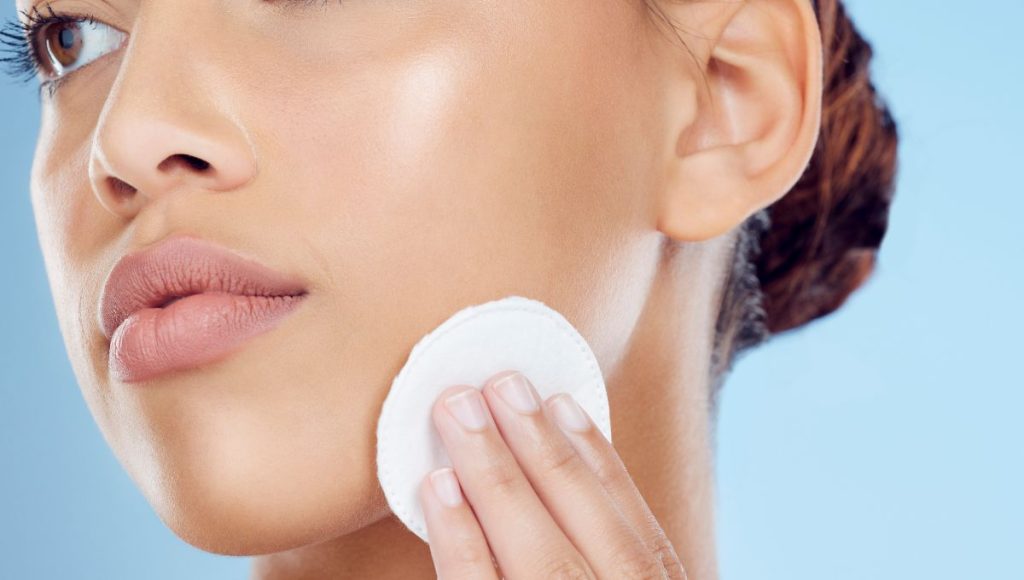
Dry skin and gritty scrubs? That’s not the love story we’re rooting for. You need smooth acids and a little kindness. And yes—there’s a perfect exfoliator for that.
Let’s look at how to smartly treat dry skin with exfoliants that exfoliate without yelling.
Why Gentle Chemical Exfoliation Wins Over Physical Scrubs
Physical exfoliation can tear. It causes microtears, worsens redness, and—honestly?—your skin deserves better.
Here’s why gentle chemical exfoliants win:
- They evenly dissolve dead skin cells
- Penetrate deeper to unclog and smooth
- Don’t require scrubbing (a blessing!)
- Offer consistent results with less trauma
Choose ones with mild AHA/BHA combos, especially exfoliating pads that balance acids with soothing ingredients.
Turmeric + Kojic Acid + Salicylic Acid Combo
Turmeric isn’t just for lattes—it’s anti-inflammatory royalty. Pair it with kojic acid’s brightening charm and salicylic acid’s exfoliating flair, and you’ve got a skin-loving smoothie.
The Nasola Lemon Turmeric Kojic Acid Exfoliating Pads check every single box. They:
- Fade spots gently
- Reduce redness
- Provide non-abrasive exfoliation
- Pack natural glow factor thanks to turmeric & lemon
Dry skin types, meet your (exfoliating) soulmate.
Hydration First: The Importance of Layering Skincare Products
So, you’ve exfoliated—but what next? Acid-based skincare for dry skin ONLY works when sandwiched between hydration. Layering is the magic glue that holds your glow together.
Let’s unpack it—step by silky step.
Hydrating Before and After Salicylic Acid Use
Here’s how the ideal routine should flow:
- Cleanse with gentle, hydrating cleanser
- Apply hydrating toner
- Use your salicylic acid or exfoliating pad
- Seal in hydration with a serum
- Lock moisture with a cream
Dry skin loves a cocktail of acids and humectants, especially when bookended by smart layering. Start with the Nasola Kojic Acid Facial Toner—it balances pH and gives skin a hydration cushion before you even touch your acids.
Barrier Repair Tips for Dry Skin Users
When your barrier is strong, your skin stays calm. After any exfoliating treatment, focus on rebuilding with ingredients like:
- Ceramides
- Peptides
- Shea butter or squalane
- Panthenol (Vitamin B5)
This ensures:
- Less water loss (TEWL)
- More resilience
- Smooth, elastic texture
- Long-term glow
Your acid game is only as good as the cushioning that follows it.
Ingredient Spotlight: Glycerin
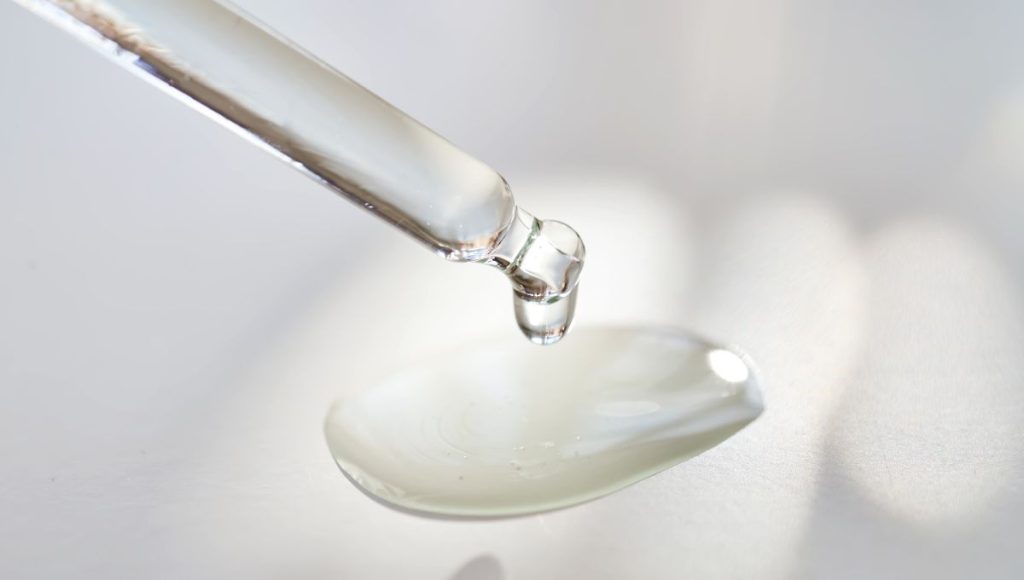
Let’s not sleep on glycerin. It’s not flashy, but ohhh… it’s good. Especially for dry skin. This moisture magnet sits in the humectant Hall of Fame—and for good reason.
Glycerin is the glue that keeps skin feeling plump after acids.
How Glycerin Helps Combat Dryness
Fun fact? Glycerin can pull water from the air and bind it to your epidermis. I mean?? That’s hydration royalty. It’s often used as a supporting act post-acid—and for dry skin, it’s critical.
Expect from glycerin:
- Skin softening without oiliness
- Better absorption of active ingredients
- Barrier reinforcement after exfoliating
- Reduced chance of peeling
Products with Glycerin for Dry Skin Synergy
Look for glycerin in your acid partners. Brands like Nasola thoughtfully blend it into serums, toners, and pads, so your dry skin never feels abandoned.
Pair glycerin-forward products with:
- Your kojic acid serum
- Nasola’s toner prep step
- A post-salicylic acid moisturizer for barrier care
Conclusion
So—let’s return to our original question: is salicylic acid good for dry skin? Answer: it can be, when used with wisdom and hydration. Salicylic acid isn’t the enemy—it’s how we use it that matters.
If you’re dry-skinned and curious, you don’t need to sit it out. Products like Nasola Triple Acid Facial Radiance Pads, Kojic Acid Serum, and Lemon Turmeric Kojic Acid Exfoliating Pads give you the perfect toolkit.
These aren’t just solutions… they’re your skincare secret weapons.
Go forth, glow strong, and moisturize right after. 😉
Frequently Asked Questions (FAQs)
Salicylic acid is powerful, but daily use on dry skin? That’s a stretch. Stick with 2–3 times weekly. Use a hydrating toner and moisturizer afterward to keep dryness at bay.
Absolutely—especially if overused. Use buffered, gentle formulas like Nasola Triple Acid Facial Radiance Pads to minimize irritation.
Avoid scrubs. Opt for chemical exfoliants like Nasola Lemon Turmeric Kojic Acid Pads that have hydrating, soothing ingredients built in.
Definitely. Products like Nasola Kojic Acid Facial Toner help restore pH and hydration immediately after exfoliation.
Yes, but choose well-formulated products. Kojic acid serums, like Nasola Kojic Acid Serum, work brilliantly after exfoliating.
It can cause mild peeling—especially when overused. Use it less frequently and follow up with a rich moisturizer and glycerin-containing products.
Star team: glycerin, hyaluronic acid, licorice root, niacinamide, lactic acid, and turmeric for hydration and calm.
Many Nasola products—like the Kojic Acid Toner or Serum—are crafted for sensitivity, but always do a patch test or consult with a dermatologist first.
Indirectly, yes—by exfoliating the top layer. When combined with brighteners like kojic acid, the effect is amplified.
Improvement often begins within 1–2 weeks with consistent use. Remember, balance with hydration is key for visible results without flaking.

